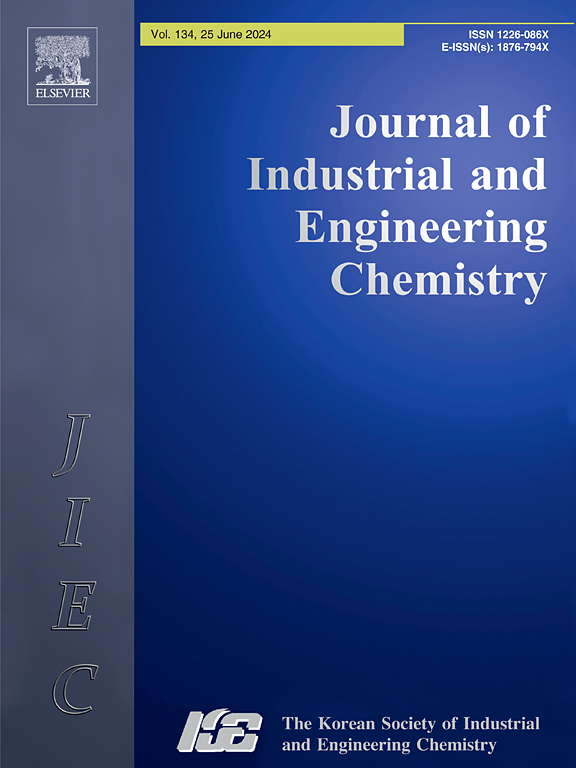Ciprofloxacin removal as an emerging contaminant using electrochemical advanced reduction process: Mechanism, degradation pathway and reaction kinetic
IF 5.9
3区 工程技术
Q1 CHEMISTRY, MULTIDISCIPLINARY
Journal of Industrial and Engineering Chemistry
Pub Date : 2024-10-28
DOI:10.1016/j.jiec.2024.10.039
引用次数: 0
Abstract
The introduction of emerging contaminants (ECs), particularly antibiotics to the water resources has grown in recent years. Due to its widespread application and their toxicity, the ECs are one of the major environmental concerns. The present study is to evaluate the electrochemical removal of ciprofloxacin (CIP) as an emerging contaminant through the advanced reduction process (ARP). Moreover, the degradation pathway, mechanism and its kinetics have provided. In this study, the impacts of main operating variables were evaluated including pH, current density, initial pollutant concentration, sodium sulfite (Na2SO3) concentration, and time on the CIP removal through electrochemical process based-ARP. The obtained results revealed the 94.15 % CIP degradation rate under optimal conditions, at the concentration of 20 mg/L and pH 5 during 60 min. The CIP reduction followed the first-order kinetics with the rate of 0.99. In addition, the ARP along with electrochemical systems as a novel process were suggested as suitable and high efficiency technique for the CIP removal.

求助全文
约1分钟内获得全文
求助全文
来源期刊
CiteScore
10.40
自引率
6.60%
发文量
639
审稿时长
29 days
期刊介绍:
Journal of Industrial and Engineering Chemistry is published monthly in English by the Korean Society of Industrial and Engineering Chemistry. JIEC brings together multidisciplinary interests in one journal and is to disseminate information on all aspects of research and development in industrial and engineering chemistry. Contributions in the form of research articles, short communications, notes and reviews are considered for publication. The editors welcome original contributions that have not been and are not to be published elsewhere. Instruction to authors and a manuscript submissions form are printed at the end of each issue. Bulk reprints of individual articles can be ordered. This publication is partially supported by Korea Research Foundation and the Korean Federation of Science and Technology Societies.

 求助内容:
求助内容: 应助结果提醒方式:
应助结果提醒方式:


